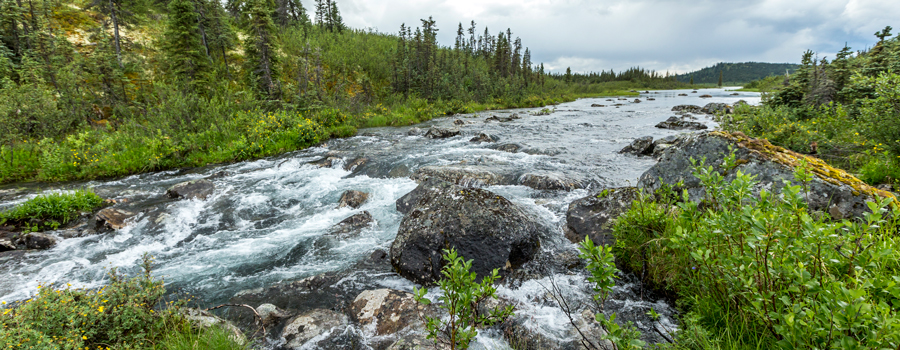
© Parks Canada / Fritz Mueller
Water
Nááts'įhch'oh National Park Reserve
Nááts’įhch’oh National Park Reserve protects the Tehjeh Deé (South Nahanni River) watershed as well as Túoch'ee Tué (O’Grady Lake), which flows into Túoch'ee Deé (Natla River). These snow-fed waters are renowned among whitewater paddlers for their technical challenges: rock gardens, rapids, and other features. River basins within the park lack infrastructure and industrial development, meaning that aquatic ecosystems are relatively pristine. Streams, rivers, lakes, and wetlands provide important habitat for fish, aquatic invertebrates, birds, as well as mammals like muskrats and beaver.
Most waterways in the park are ice covered for about seven months per year. Deep winter snowpack and ice melt rapidly in the spring. Throughout the summer, water temperatures in rivers and streams hover above freezing, although lakes and wetlands are several degrees warmer.
The park’s three major rivers drain into the Tehjeh Deé (South Nahanni River, or Nahʔa Dehé in the Dehcho language), which is a tributary of the Deho (Mackenzie River), the longest in Canada. Its waters drain into the Arctic Ocean. Other major rivers originating from the Shúhta (Central Mackenzie Mountains), although not within the park’s boundary, include the Begaadeé (Keele) and Túoch'ee Deé (Natla). For many generations these rivers have served as travel routes between the mountains and lowlands for the Sahtu Dene and Métis people. Mooseskin boats were often used to transport people and goods down these waterways.
- Date modified :